The Great Richards: Bringing the Bling 1905
Written and published in The Betty Pages in March 2023
Images of The Great Richards as printed in the Bellingham Herald in June of 1905.
In June of 1905 Beck’s Theatre in Bellingham advertised a magnificent vaudeville bill for the summer that included “The Great Richards and his $5000 diamond dress.” The Herald published not one but two images of The Great Richards: a signed portrait of the performer in fabulous feathers, and a full-body photograph of Richards in the “diamond dress” embellished with hand-drawn “sparkles.”
The off-stage life of the Great Richards remains a mystery. Described as a native of Vienna, Austria, by the mid-1880s Richards appeared on stages in London, England. Richards arrived in New York by 1889, where he was billed at Doris’s Dime Museum, “the Coolest Amusement Temple in the City,” with “the cream of refined sensational artists in the best programme ever given on earth at any price.”
Advertisements listed the high salaries commanded by the talent the venue had procured, including The Great Richards at $75 per week - over $2000 in today’s currency.
During the 1890s Richards performed what is known as a “half-and-half act,” as described by The Boston Globe: “Great Richards compels us to exclaim ‘Great Scott!’ when we see him cross the stage as a richly dressed lady; and turning, he is instantly metamorphosed into a man with mustache, in evening dress. He is known as the double-voice vocalist – soprano and baritone.”
As any good female impersonator should, Richards had elaborate costumes that were often remarked upon in the news. Gushing descriptions of Richards and his act appeared in newspapers across the country:
“The costumes worn by this artiste were the grandest that human eye ever gazed upon “
“She is a he, and he dresses in a dress of scintillating colors, which is a thing of beauty.”
“Ladies this act and its wardrobe is a dream of gorgeous splendor. You can’t afford to miss it.”
By 1905 Richards debuted a new costume that garnered a lot of attention, the “Diamond Dress.” Whether the dress truly featured diamonds and the hefty price-tag of 5 grand (over 200 grand today), rhinestones or something else entirely, Richards’ act clearly sparkled:
“The male soubrette is the title given Great Richards and as such he is known all over the country. As an impersonator of women, it is said he stands without a peer. He is capable of singing in a high soprano voice, is an accomplished toe and serpentine dancer and hits off all the little mannerisms of the fair sex to a nicety. But probably the feature that makes his act distinct and better than all others is the manner in which he presents it to the public. Possessed of a fine wardrobe which has gained for him the sobriquet ‘the man with the diamond dress,’ the most bewildering light effects also are called to his aid by Great Richards in presenting his specialty. He carries his own electricians and electrical apparatus.”
An early adopter of electrical lighting effects, one can imagine Richards twirling like an Edwardian era disco ball.
In 1909 Richards was performing in Australia, where a newspaper commented: “The Bijou Circuit have made another ten-strike in securing The Great Richards for a feature attraction next week. This famous artist… is on the eve of leaving for Europe for an extended tour. …His performance is clearly away from the usual vaudeville acts, and in his line of work he stands without a peer… The Great Richards is a young man of good looks and perfect form and sings in a clear soprano voice. He wears gorgeous and costly costumes, making several changes at each performance and never appears in the same dress twice during an entire weeks’ engagement. His act will be presented with special scenic and electrical effects.”
Back in the U.S. in 1911, the Great Richards debuted “The Act Beautiful,” called “the most gorgeously staged act ever presented” with “beautiful plush draperies arranged in an elaborate manner, giving an effect that caused the spectators to gasp in astonishment.”
The last news mentions of The Great Richards found were in the 1920s, then billed as “The most mysterious person in the world,” with a new promotional twist – a public guessing game. Ads read:
“Man or Woman? Find Out – Win Present. Nine public appearances will be made by the Great Richards – six in the attire of a rarely beautiful woman – three in the garb of a splendidly dressed, strapping young man… Is the Great Richards a man or a woman? This is for the people to find out… Whether the Great Richards is a man or a woman is not disclosed. His appearances as both make it difficult to decide just which sex he impersonates.”
After his performances, Richards appeared in various public locations dressed in costume. If someone could identify Richards with a tap on the shoulder… and heard the reply “you are correct,” they won the prize.
After the guessing games of the 1920s The Great Richards disappeared from the headlines. What was the fate of the Great Richards? Though it may be coincidental, ads for a magician using the moniker “The Great Richards” suddenly appeared around the same time, and one can’t help but wonder if Richards ‘transformed’ his act yet again.
Austria, Richards reputed homeland, is also the birthplace of rhinestones and Swarovski crystals, essentials of modern costuming bling. Whether Richards was adorned with diamonds, shiny glass, or tin foil, The Great Richards sparkled, reflecting dazzling light on audiences around the world.
Beck’s Theater on Dock Street - Cornwall Avenue today. It later became the Metropolitan, then the American Theater. It was torn down for a new J.C. Penney’s building in 1959, which stands empty today next to the BNB bank building.
Gallery of newspaper clippings about “The Great Richards” as appearing in the early 1900s.
You can help support the Betty Pages by subscribing on Patreon here: https://www.patreon.com/TheBettyPages



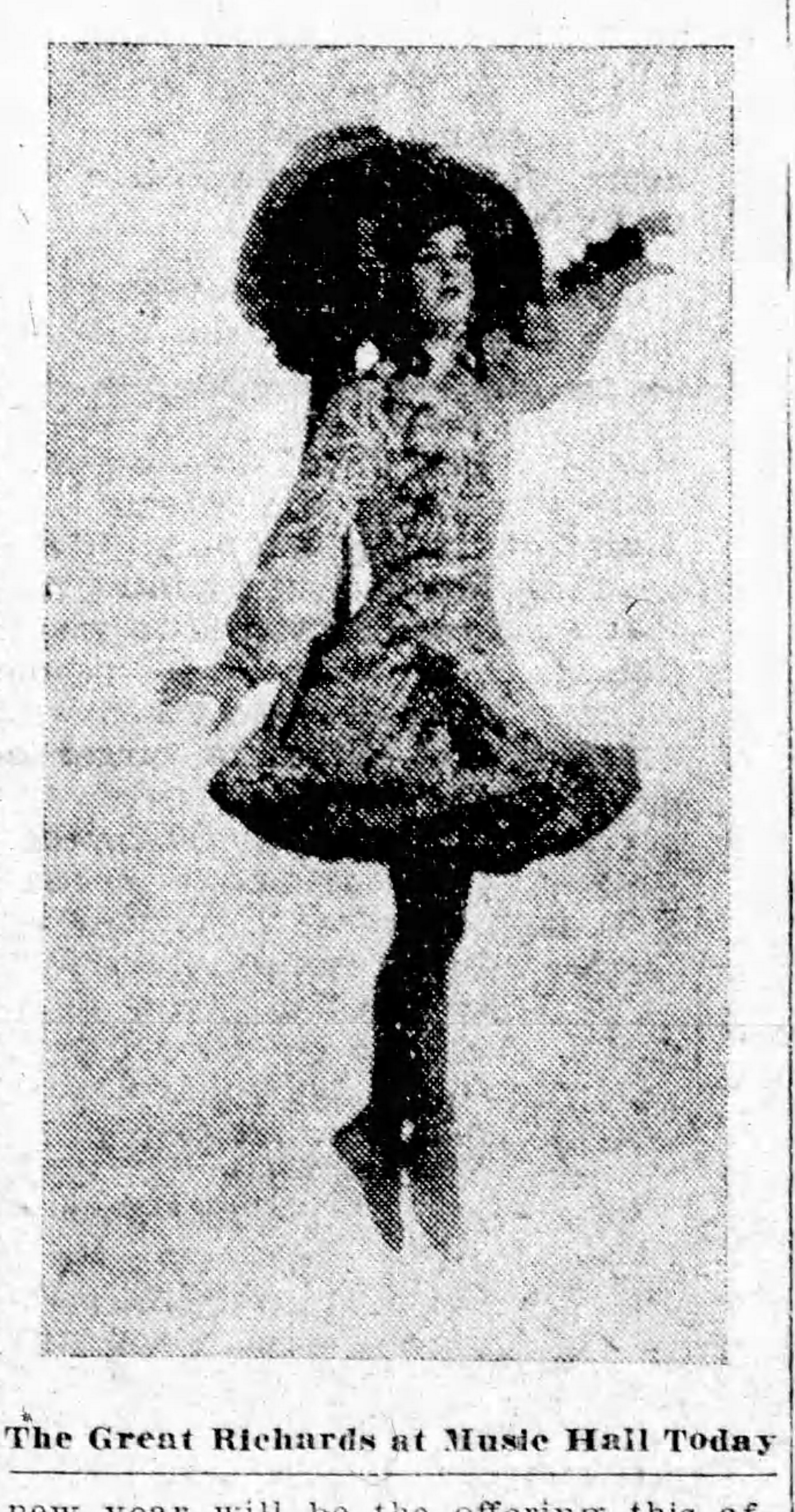

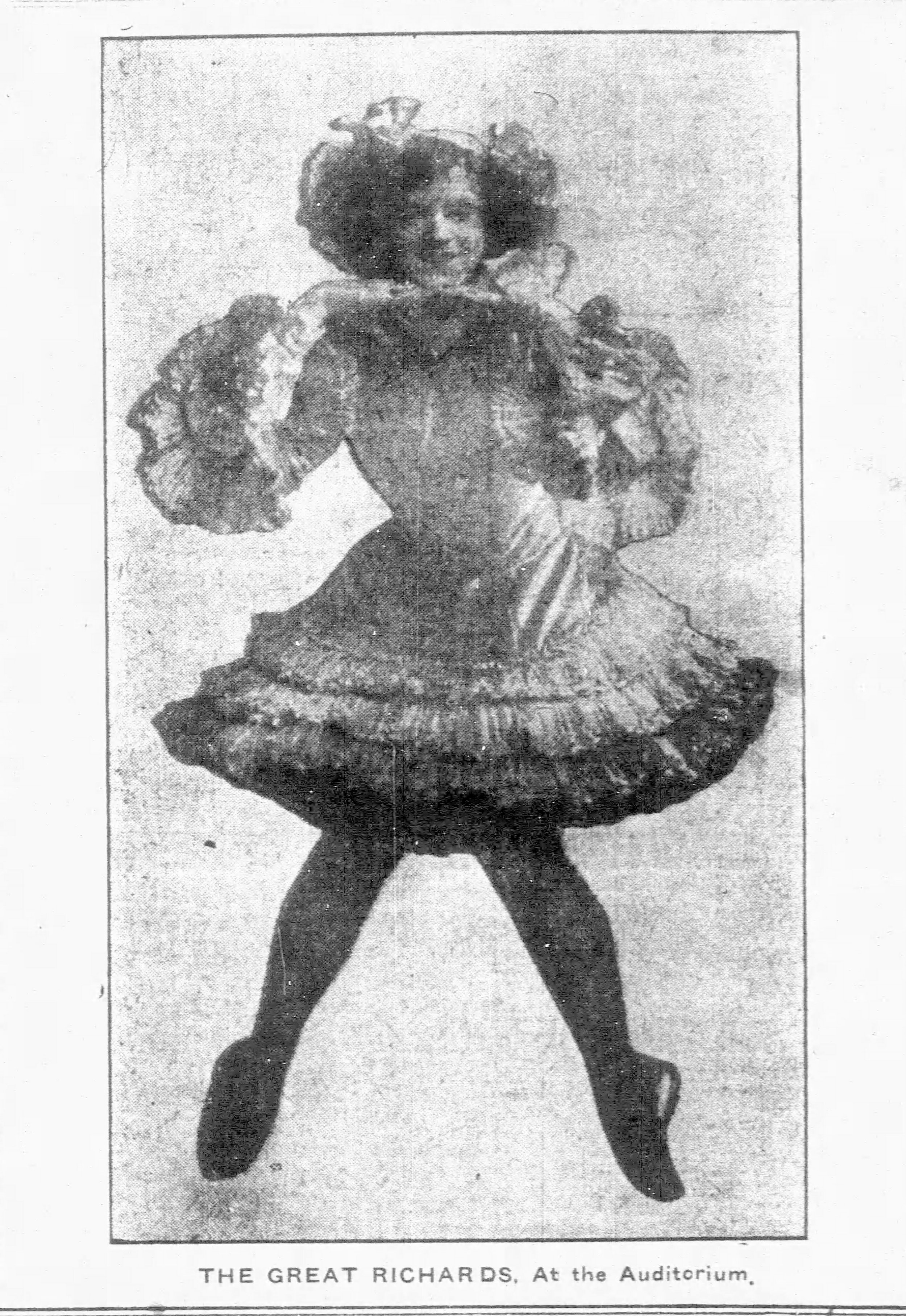
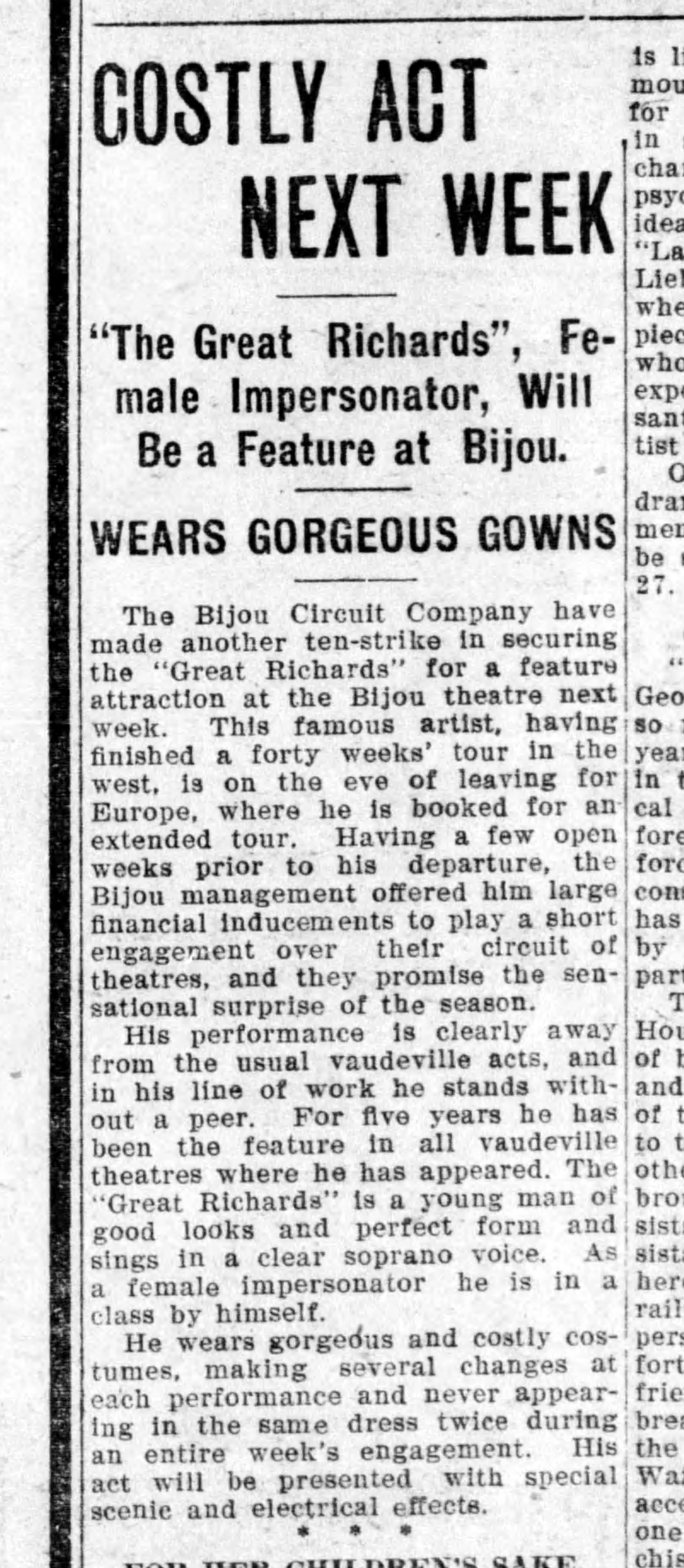
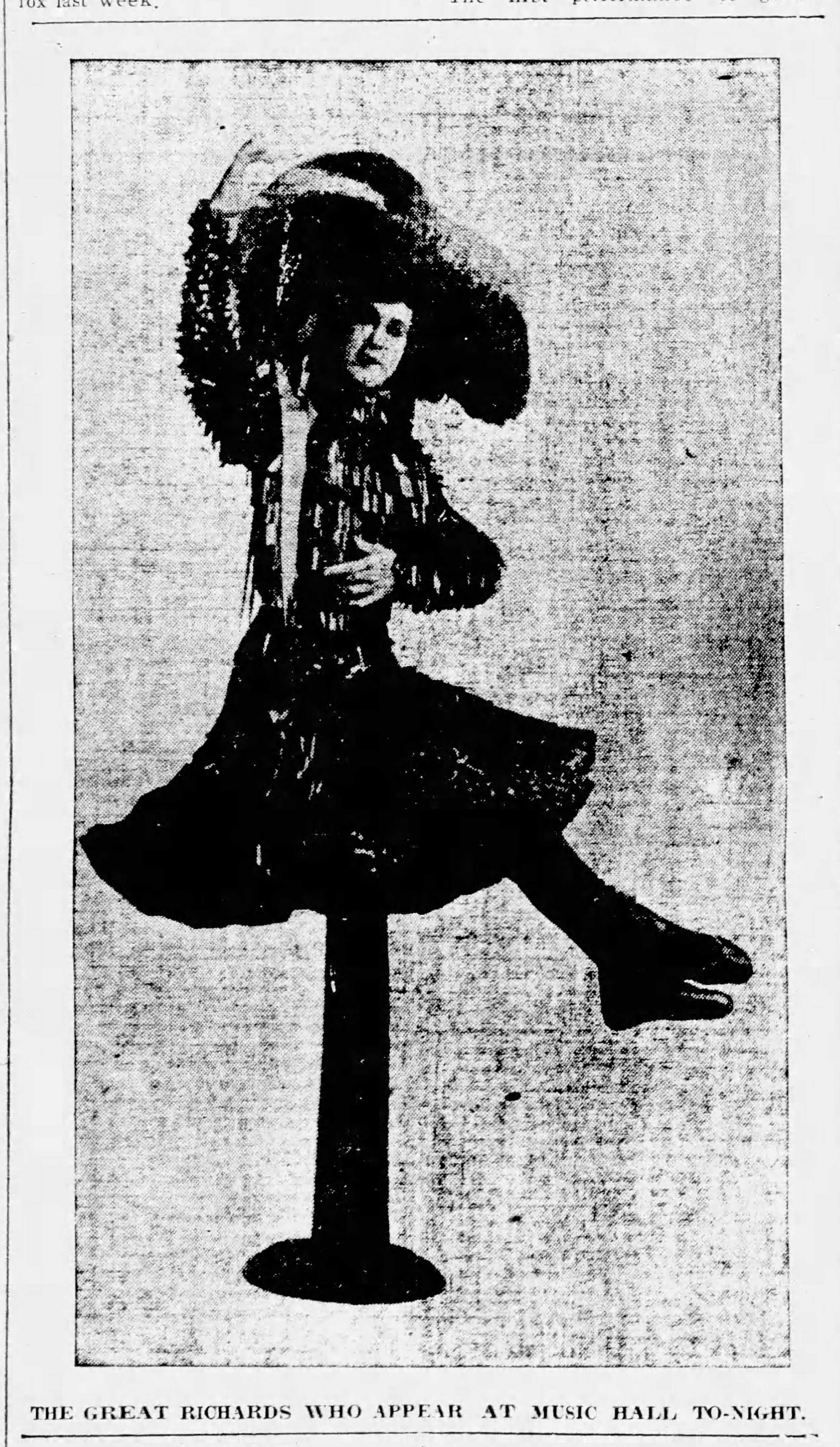
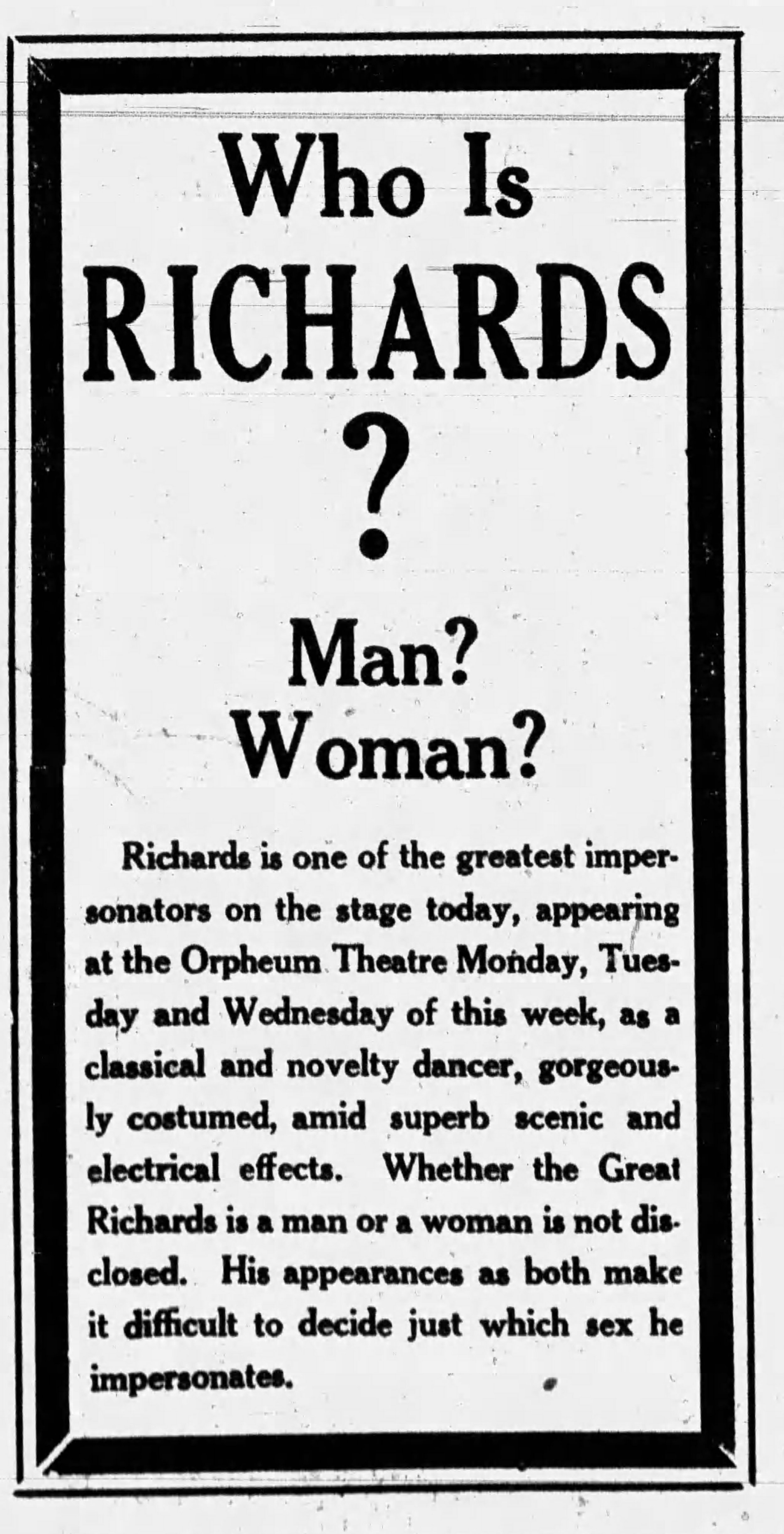






Percy teamed up with another female impersonator who went by Lou Lalonda. Percy and Lou were billed at Bellingham’s Grand Theater on Holly Street in September of 1905. At the time of their performance in Bellingham, papers described them as “two pretty young ladies who easily win applause.”